ProClova XL is officially launched and available for use!
|
We are thrilled to announce the successful completion of the ProClova® XL launch events across Ireland. Over the past few weeks, we have educated over 300 individuals about this exciting new clover-safe herbicide. Thank you to all those who attended!
|
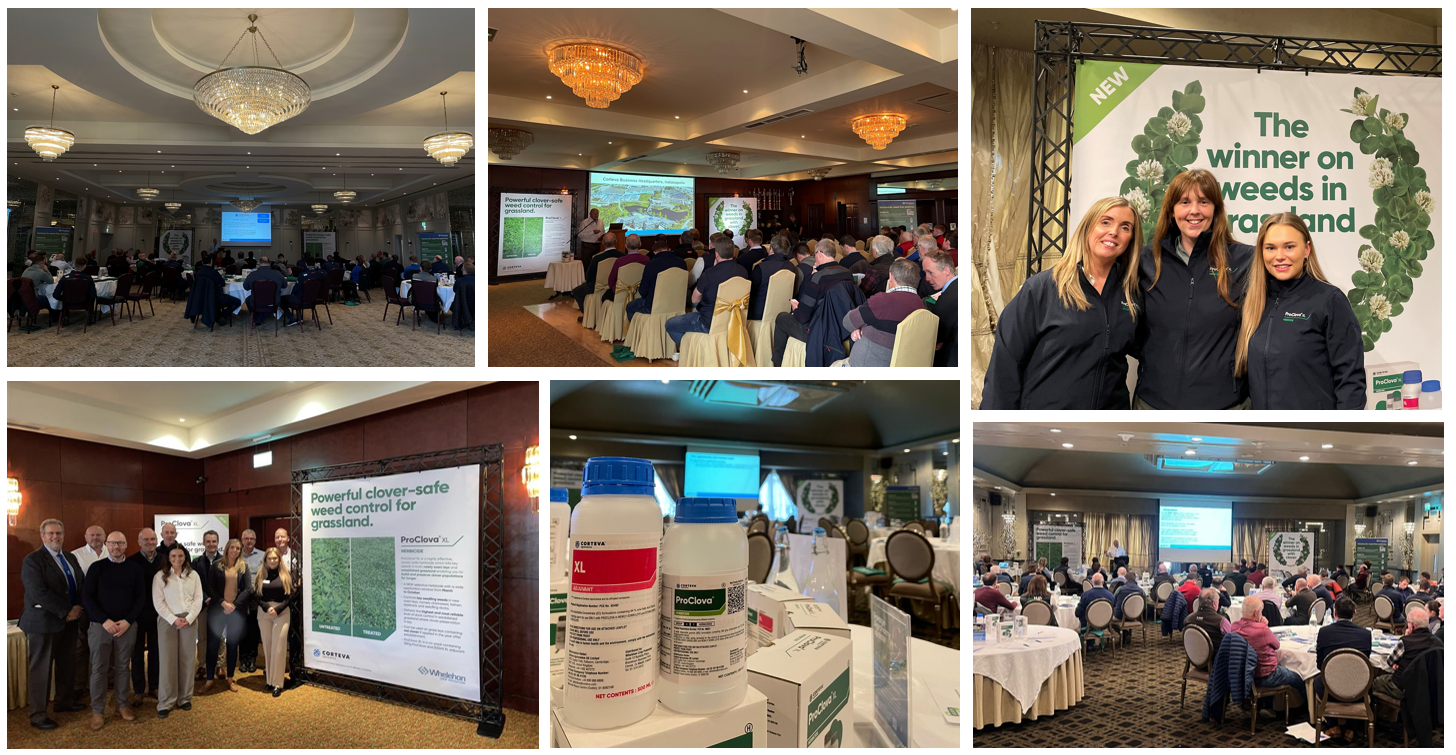
|
|
|
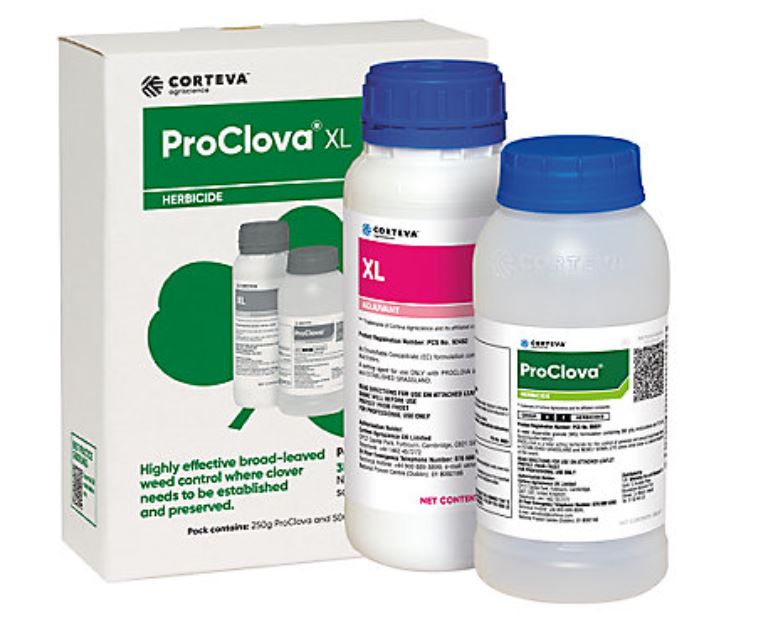
|
Dock control ahead of first silage cut
|
Early treatment of docks in grass leys will protect silage yields and quality. As they compete for light, nutrients and moisture. Docks are unpalatable with only 65% of the feed value of grass. They also adversely affect silage fermentation which reduces feed quality further still.
Fields used for silage are most at risk due to the open nature of the sward, which allows established docks to spread and viable seeds to germinate. The lack of spraying opportunities last year meant a lot of dock populations were not treated. That coupled with recent wet weather is likely to lead to a bigger dock problem than normal.
Treat docks when active growth is seen, they have reached the rosette stage and look green and healthy. Docks respond well to nitrogen, so a good time to spray is two to four weeks after the first fertiliser application, as they should be actively growing by then.
Grass checks, post herbicide use should not be a concern with a product like Doxstar® Pro. Allow at least 21 days from spraying to cutting to enable full translocation of the product into the roots.
|
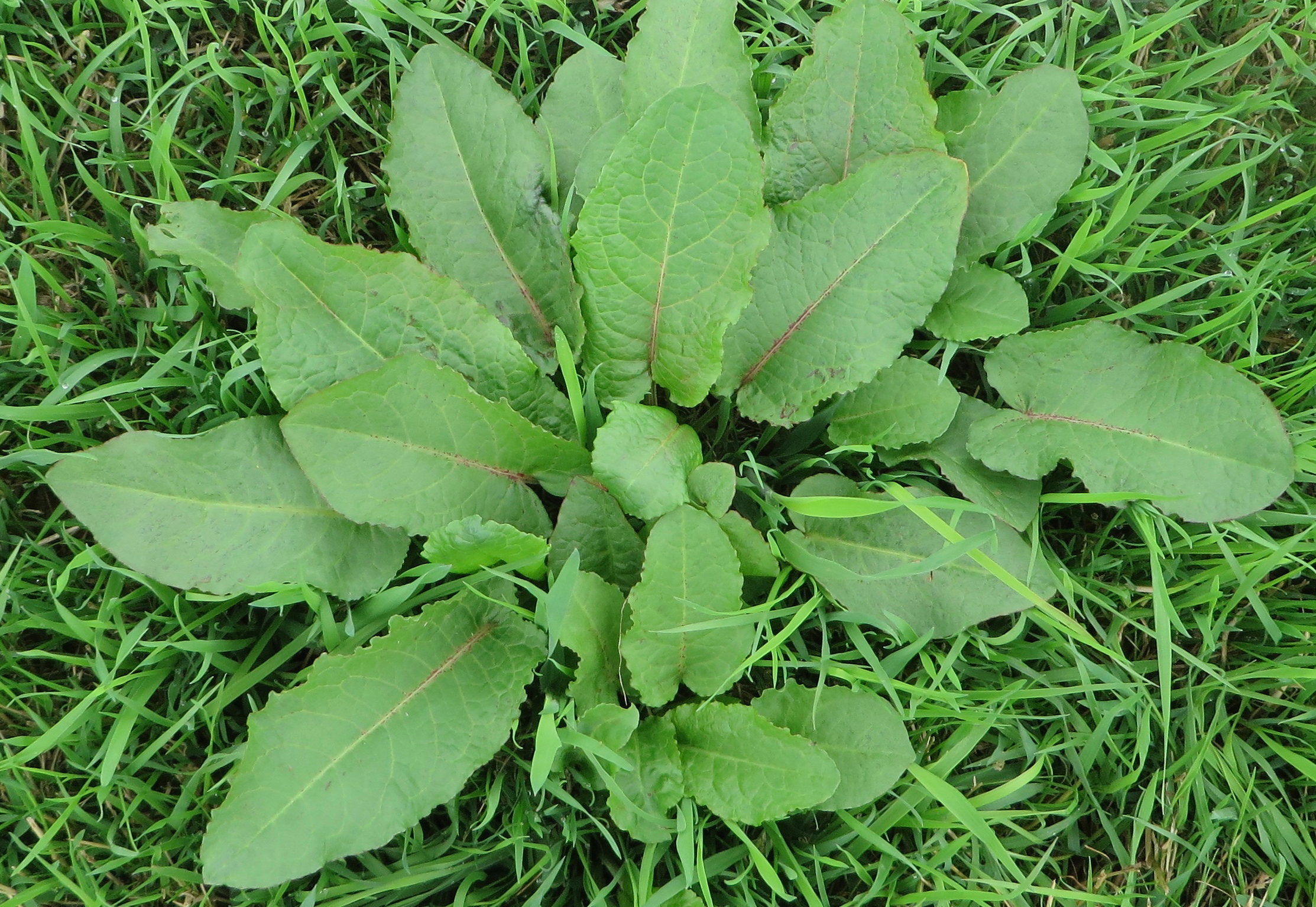
|
Weed control options for newly sown leys
|
Reseeding grassland is a major investment, but weeds frequently go untreated and grass establishment and subsequent productivity can be compromised. Chickweed, in particular, should not be allowed to swamp the young grass. When it dies away later in the year, it leaves bare patches of soil which quickly get colonised by other weeds, notably docks.
Early treatment of seedling weeds is advisable as levels of control are higher and dose rates of herbicides are lower than that needed for more established weeds.
Product options:
- Chickweed: use Envy® at 1.0 L/ha
- Chickweed and seedling docks emerging from root fragments: use Envy at 1.5 L/ha
- For a wider range of weeds including seedling thistles: use Pastor® Trio at 1.0 L/ha
|
Curled dock versus broad-leaved dock - what's the difference?
|
Curled dock (Rumex crispus) and broad-leaved dock (Rumex obtusifolius) are both problem weeds in grassland.
Curled dock characteristics:
- Has narrower leaves, which are usually at least three times long as wide
- The leaf margins are often wavy
- The flowering stems are much less branched than those of broad-leaved dock and tend to be carried close to the main stem
- Growth habit can be quite erect in comparison to broad-leaved dock, thus reducing the spray target
- Flowering starts in early June
- Tends to be much shorter lived than broad-leaved dock and can behave as an annual or biennial in some situations, with plants dying after flowering
Broad-leaved dock characteristics:
- Broad lower leaves with an elongated heart shape
- Leaves are usually at least half as wide as they are long
- The flowering stems are well branched
- Flowering in late June or July and the fruits, when fully ripe, are a reddish-brown colour and often remain in clusters on the stems
- Individual plants of broad-leaved dock can be very long-lived, especially in pastures
|
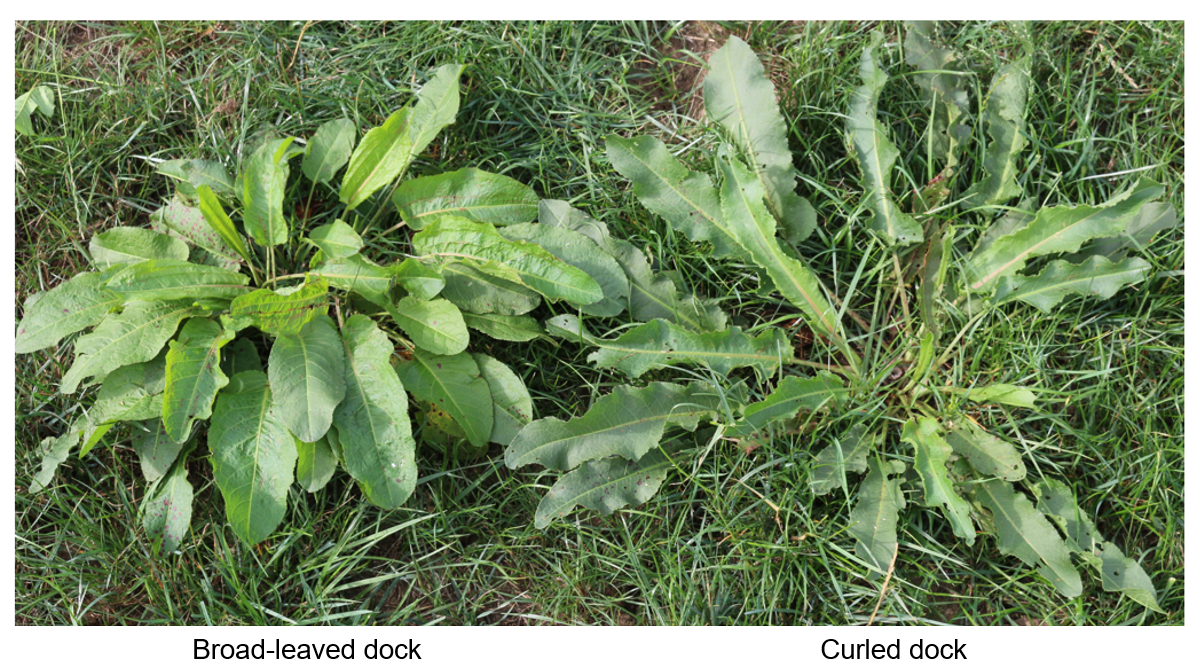
|
Both species occur in grassland and produce large numbers of seeds (>25,000 per plant), which are very persistent in the soil. In some situations, curled dock and broad-leaved dock can hybridise making identification difficult.
Doxstar® Pro will give good control of both broad-leaved and curled dock.
|
How weather factors might affect spring weed control in grassland
|
Wet weather leads to poaching issues. This creates thin areas of pasture and gaps, potentially leaving a more open sward as well as disturbing the soil structure allowing problem weeds such as chickweed, buttercups and docks to encroach.
Some farms have sacrificed a field where silage bales have been put out, accepting the ground will be ruined by livestock. These fields will need a spring reseed.
Grass shows a tremendous capacity for compensatory growth, so dock herbicide application between silage cuts needs to be planned to ensure a suitable post application window.
Buttercups and rushes thrive in wet ground, so these could be a bigger issue this year compared to recent years.
|
Fields of yellow: dandelion and buttercups
|
Both dandelions and buttercups compete with grass for light, water, space, and nutrients. Where they occur in large numbers, control can be warranted. They frequently emerge in poorer quality soils, or where nitrogen applications are minimal. Buttercups particularly are a good indicator of where soil fertility and drainage need to be improved.
Grass swards may contain less competitive grass species and so these weeds can quickly dominate. Both weeds are significantly less nutritious and palatable than grass and are generally avoided by livestock. Where they grow – grass does not!
|
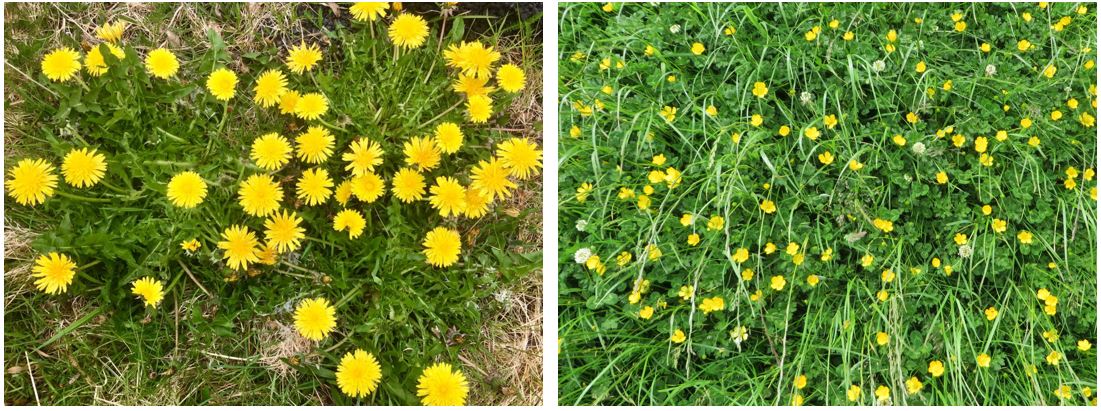
|
For best control, use Envy® at 2.0 L/ha.
|
Helping your maize establish and reach its yield potential with BlueN
|
Well documented weather conditions this spring will result in many maize crops being drilled late. These will need every help to establish, and to reach their yield and quality potentials. BlueN™ is recommended for use on maize. Apply 0.333kg/ha when the crop is between 4-8 leaves. Once established in the crop, BlueN will capture atmospheric nitrogen converting it into ammonium in the plants for the lifetime of the crop.
Trials show that BlueN can deliver equivalent to 30kg of applied nitrogen to the crop. BlueN was applied on top of the normal fertiliser programme in 69 trials, and when compared to untreated areas of the same fields the win rate was 78% with an average fresh weight response of 0.4t/ha and 0.6t/ha. Assuming a grain maize value of £250/t and the cost of BlueN as £30/ha, this is a return on investment of £120/ha.
|
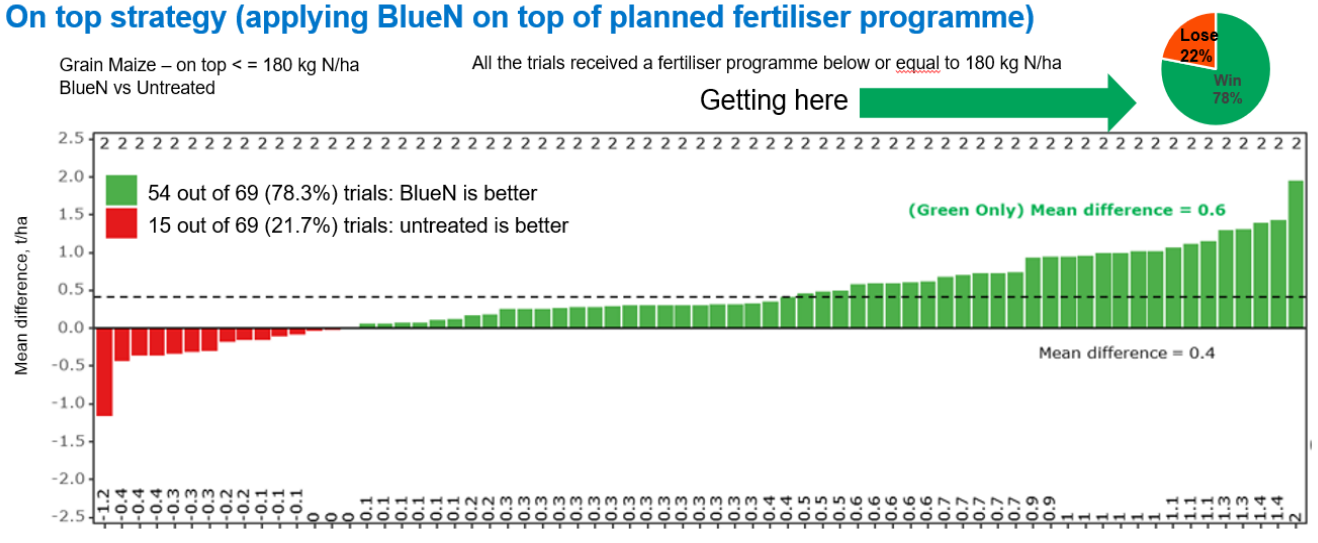
|
A BlueN trial in Cornwall on the variety Cito in 2023 achieved the following results. These improvements, particularly ME (1.1) and D-value (7) will increase milk and live weight gain in cows, cattle and lambs (NIAB research).
For example, a 7 point increase in D-value can result in an:
- Extra 1.82L/day/cow
- Extra 280g/day beef live weight gain
- Extra 140g/day lamb live weight gain
Or, if sold as a standing crop, the fresh weigh gain in yield was 3.6t/ha which at £60/t = £216/ha, or a return on investment of £186/ha (BlueN £30/ha).
|

|
To find out more about BlueN use on maize, click here to watch our short video.
|
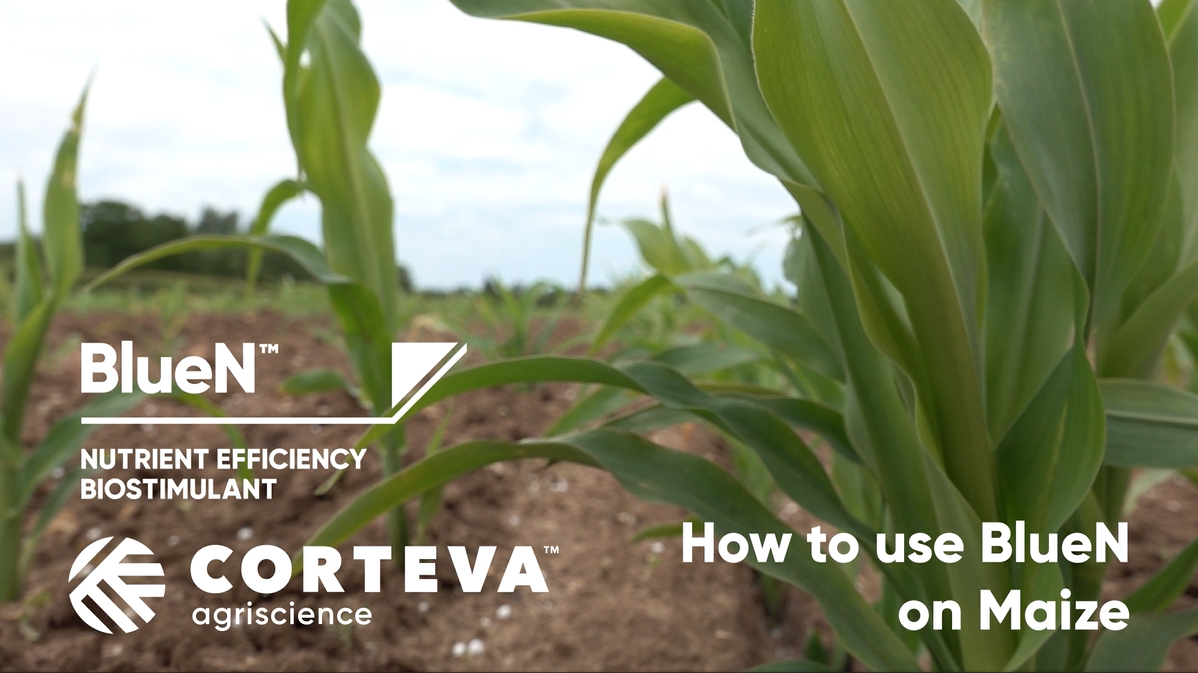
|
Lower quality over-winter pastures
|
After a particularly mild and wet winter, most pastures contain an abundance of poor quality material in the base of the sward which will result in lower quality first cut silages unless steps are taken to address the problem. With above average temperatures through November, December and January, grass growth has been good but the mild and moist conditions have led to the build-up of dead leaves in the bottom of the sward. On heavier ground, soils have been waterlogged for considerable periods with the grass plants becoming chlorotic and yellow.
|
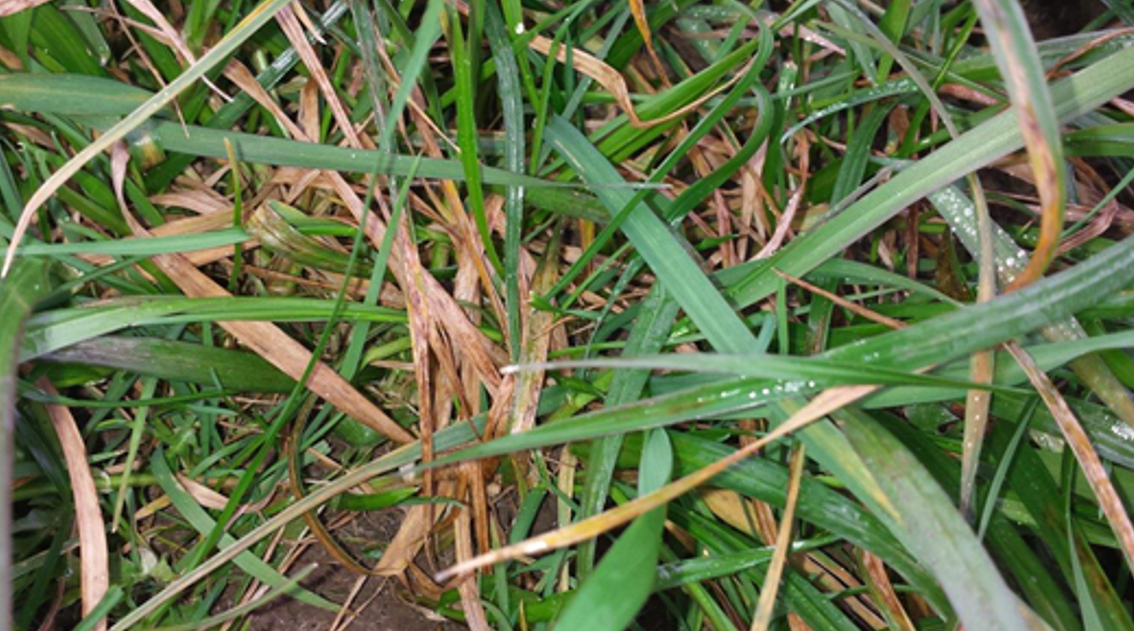
|
Experience has shown that silages made following a mild winter will have a Metabolisable Energy (M.E.) content that is 0.2 lower due to lower sugars, lower protein and higher fibre. The combination of lower M.E. and reduced forage intakes has resulted in milk yields dropping by up to 1 L/day.
The inclusion of the lower-sward dead material provides a challenge to the silage fermentation for two main reasons:
- The dead material will be very low in the sugars that are crucial for the production of lactic acid. This becomes particularly pertinent if conditions are overcast and wet at harvest and sugar contents are low and diluted.
- The dead material may contain high levels of yeasts, moulds and high populations of detrimental bacteria such as clostridia. The former will increase the risk of aerobic instability while the latter can result in butyric type fermentation. Both of these types of contamination will reduce feed quality and intake levels.
There are a number of practical steps that farmers can take to help address the problem:
- Affected pastures can be grazed off with late lactation cows, replacement heifers or sheep.
- Zero-grazing and feeding to less productive livestock may be an option on some farms.
- By raising the cutting height at first cut, more of the poorer quality material will be left behind; the aftermath can then be grazed to ensure a high quality second cut.
- By bringing the date of first cut forward by a week, the grass crop will be comprised of younger material of higher quality that will compensate for the dead material in the base. The first cut tonnage would be reduced, but this will be compensated for by a higher yielding second cut (see table below).
- If the silage dry matter content is over 25% dry matter, apply Pioneer® Brand 11G22 Rapid React to improve the fermentation and reduce aerobic instability. If silage dry matter is below 25% dry matter, use Pioneer Brand 1188.
|
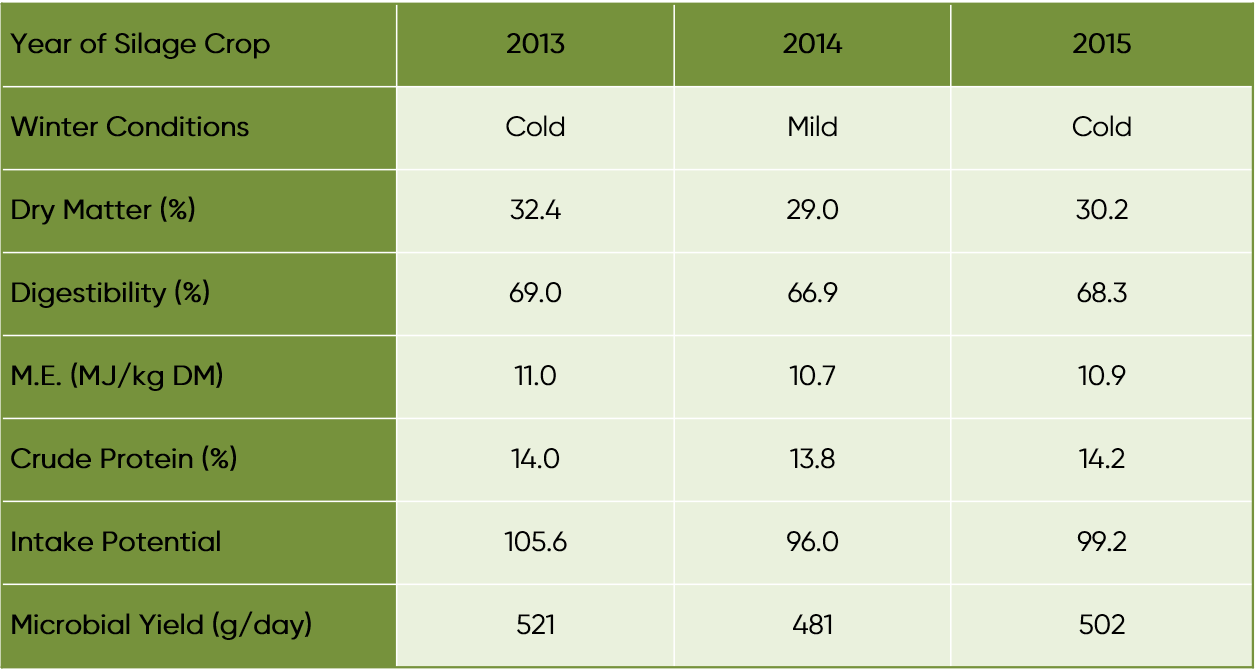
|
Table (Source: Trouw Nutrition GB laboratory)
|
The domination of the fermentation by homofermentative lactic acid producing bacteria in 11G22 RR and 1188 will ensure that those sugars that are present will be utilised efficiently to generate the volumes of lactic acid required to reduce the pH and create stable silage. The subsequent production of acetic acids by the Lactobacillus buchneri bacteria within 11G22 RR will significantly reduce the multiplication of yeasts on exposure to air during feed-out, thereby reducing heating and spoilage at the silage face.
|
Making first cut grass silage in challenging conditions
|
As grass growth accelerates with the warmer weather, growers will be preparing for first cut silage and are encouraged to consider some of the agronomic factors that may provide a challenge this year.
High slurry and manure residues:
- Slurry and manure residues may be higher this season due to the wet spring weather having delayed applications of slurry. Any slurry (see photo one at the bottom of this section) or manure residues that get incorporated within the first cut grass increase the risks of a clostridial fermentation with the likely production of butyric acid. Clostridia bacteria degrade proteins resulting in lower protein content and a consequent reduction in dry matter intakes.
- An effective Pioneer silage inoculant that dominates the fermentation with homofermentative bacteria and lowers the pH faster and further than otherwise would have been the case, will significantly reduce any clostridia activity - thereby safeguarding the silage quality. Pioneer® Brand 1188, for grass silage up to 30% dry matter, has been proven to do just this. By suppressing the microbial activity that generates ammonia, Pioneer 1188 has also been shown to reduce ammonia, content by as much as 46%. For grass over 25% dry matter 11G22 Rapid React may be a suitable choice as it is a combination product that will assist the fermentation and also inhibit yeast and mould growth.
Slow uptake of nitrogen:
- In many areas, the wet conditions delayed the application of inorganic nitrogen. The main consequence of this will be higher levels of non-protein nitrogen within the grass crop resulting in a higher buffering capacity. This extends the fermentation resulting in reduced sugars and brings the risk of a secondary fermentation.
Soil contamination from mole hills:
- Mole numbers have been reported as “increasing rapidly” over recent years and are now estimated at 35 – 40 million within the UK (see photo two at the bottom of this section). Mild winter conditions have resulted in more mole activity this season.
- Working on the basis that a mole can push up twelve hills each with 4 kgs of soil, that is nearly two million tonnes of soil! Scientists have calculated that every gram of soil contains six billion micro-organisms with a high number of clostridial strains.
- As mentioned above, clostridia are extremely detrimental to an effective silage fermentation and therefore care should be taken to avoid soil contamination as a result of mole hills or through harvesting equipment disturbing the soil surface.
|
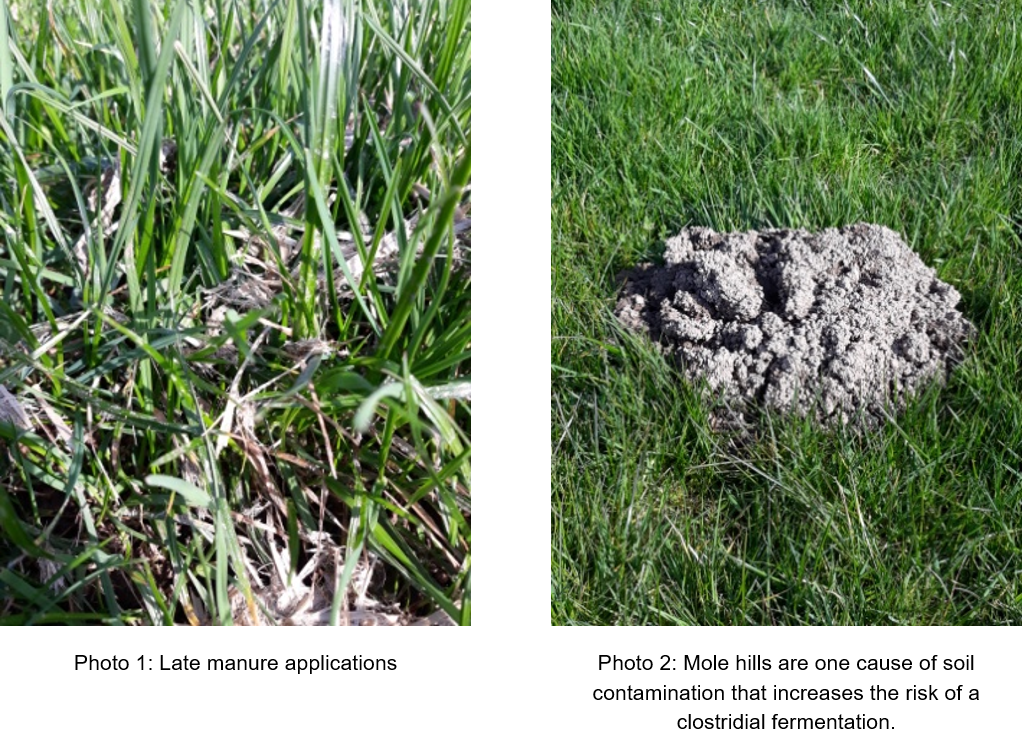
|
|
|
Q: The Doxstar® Pro label states a 28-day cutting interval. Can I spray closer to the cutting date?
A: Optimal control and complete decay of treated docks so that they won’t be included in cut grass destined for hay or silage will be at 28 days. You can reduce the cutting interval where necessary. At 14 days, 90% of the product will have reached the growing tips where it will have useful activity.
Q: Can I spray buttercups/dandelions once they have started flowering and still get good control?
A: Yes – optimal control is pre-flowering. However, you can expect circa 90% of the optimal control if spraying after this point.
Q: Should I use Envy® or Pastor® Trio on my spring re-seed?
A: Pastor Trio gives the widest range of weed control and will include weeds such as thistles, sow thistles and groundsel. If the focus is chickweed and seedling docks, or the newly sown ley is for cutting, then select Envy.
|
|
|
10 IASIS points will be awarded to those subscribing to the Forage Agronomy Update. To subscribe click here.
|

|
|
|